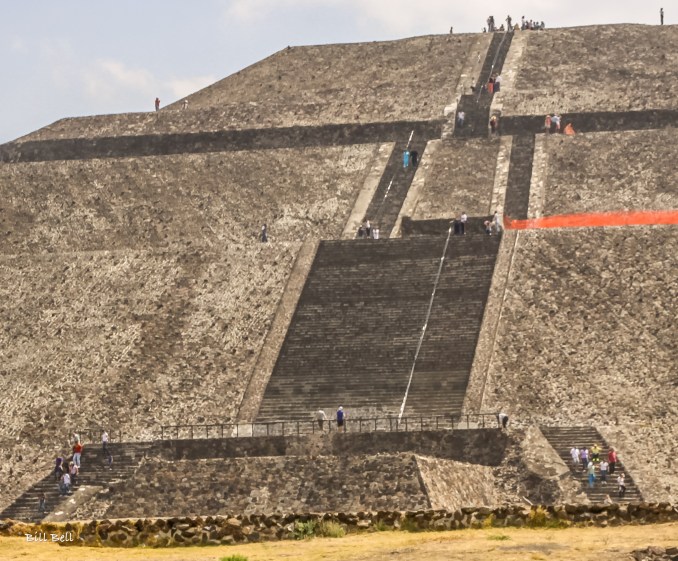The Pyramid of the Sun, located at the heart of Teotihuacan,
by Dorothy and Bill Bell

The Pyramid of the Sun, located at the heart of Teotihuacan, is the largest structure on the site and the third-largest pyramid in the world, surpassed only by the Great Pyramid of Cholula near Puebla, Mexico, and the Great Pyramid of Giza in Egypt. This monumental structure, likely used as both a religious and sacrificial center, played a central role in the spiritual life of the ancient Teotihuacan civilization. Rising to an impressive height, it was built around 200 CE, making it one of the most significant landmarks of pre-Columbian Mesoamerica.
When the site was rediscovered in the early 20th century, the pyramid appeared as a massive, eroded mound of stone rubble, with vegetation—trees and plants—growing out of the structure. The temple that once crowned the summit of the Pyramid of the Sun had long since disappeared, likely due to centuries of weathering and the decline of the Teotihuacan culture. While the original temple’s purpose remains a mystery, it is believed to have been dedicated to solar worship, in keeping with the pyramid’s alignment with astronomical events, such as the setting sun on the day of the summer solstice. Today, the Pyramid of the Sun stands as a powerful testament to the engineering prowess and religious devotion of ancient Mesoamerican civilizations, continuing to captivate visitors and archaeologists alike.


Constructed between 100 and 200 CE, the Pyramid of the Sun initially measured 215 by 215 meters (705 by 705 feet) at its base and stood approximately 63 meters (206 feet) tall. Around 50 to 75 years later, the pyramid was expanded, reaching its final dimensions of 225 meters (738 feet) square at the base and a height of 75 meters (246 feet), making it one of the largest structures in the Pre-Columbian Americas. The temple that once stood atop the pyramid, completing its grand design, was finished around 300 CE.
The pyramid was originally constructed with four stepped platforms made from stone blocks, coated with lime plaster, and vividly painted in red and other striking colors, adorned with murals and symbolic motifs. However, during its reconstruction in the early 20th century, a mistake was made, and the pyramid was incorrectly restored with five platforms instead of the original four.




